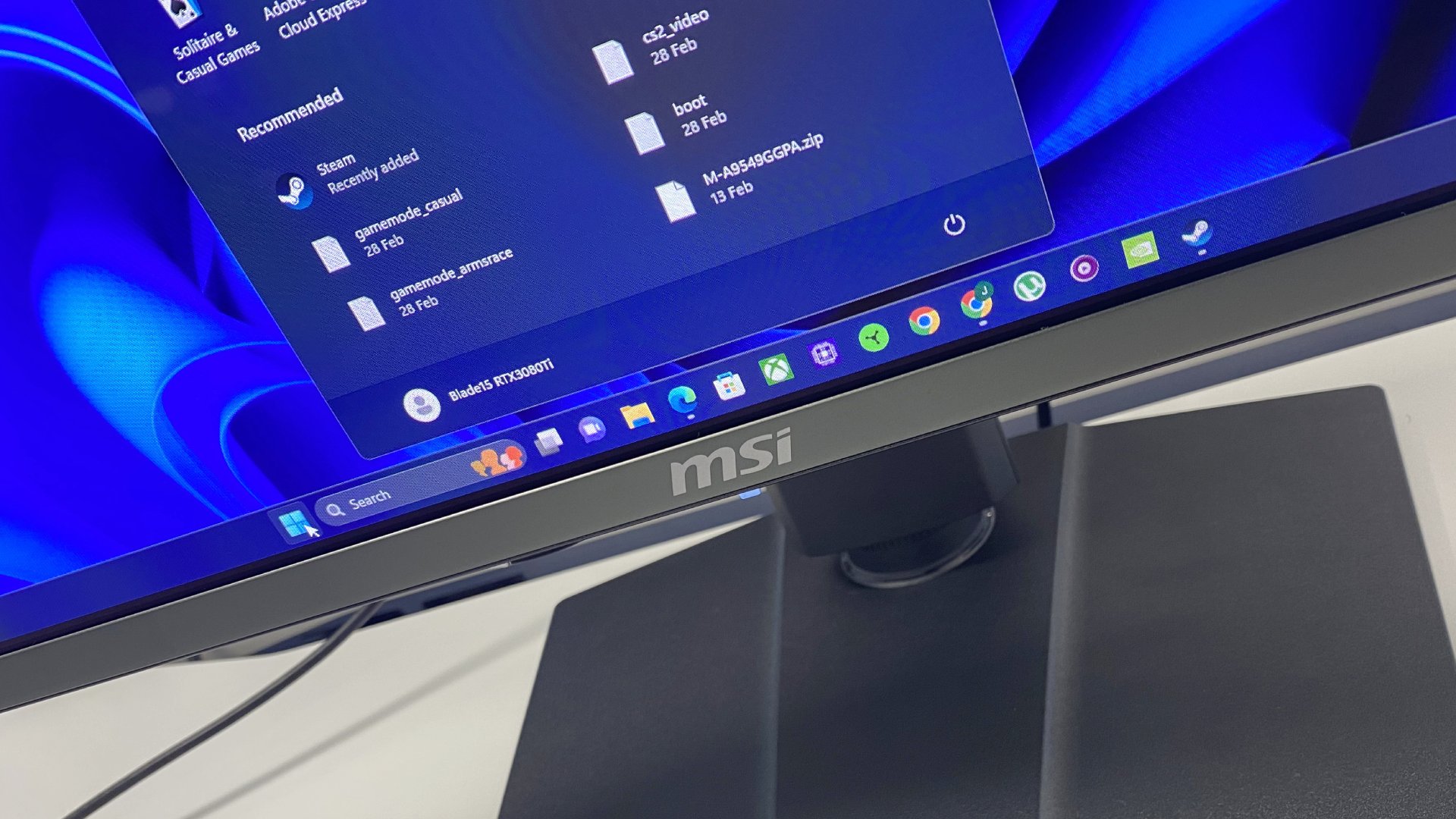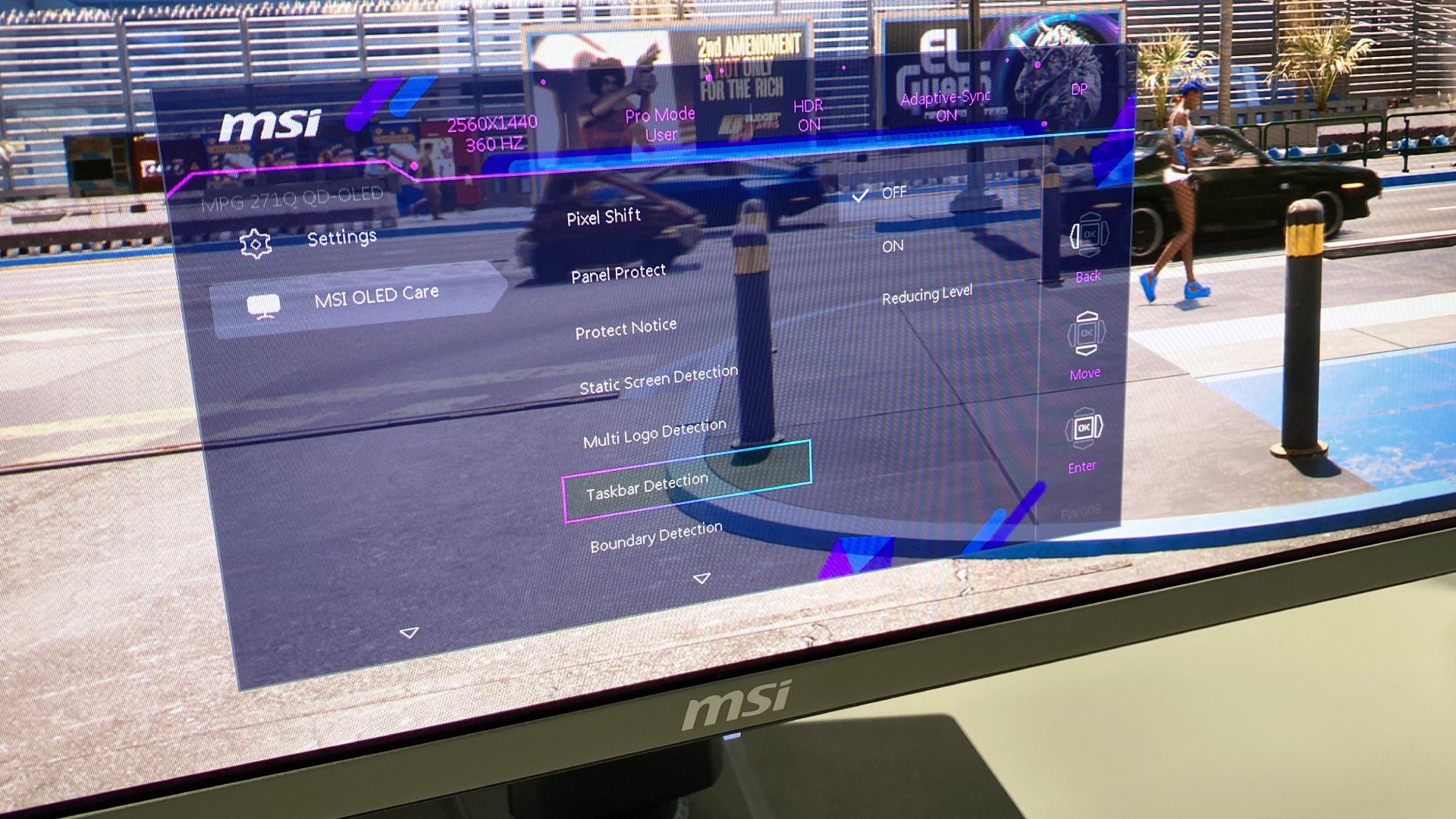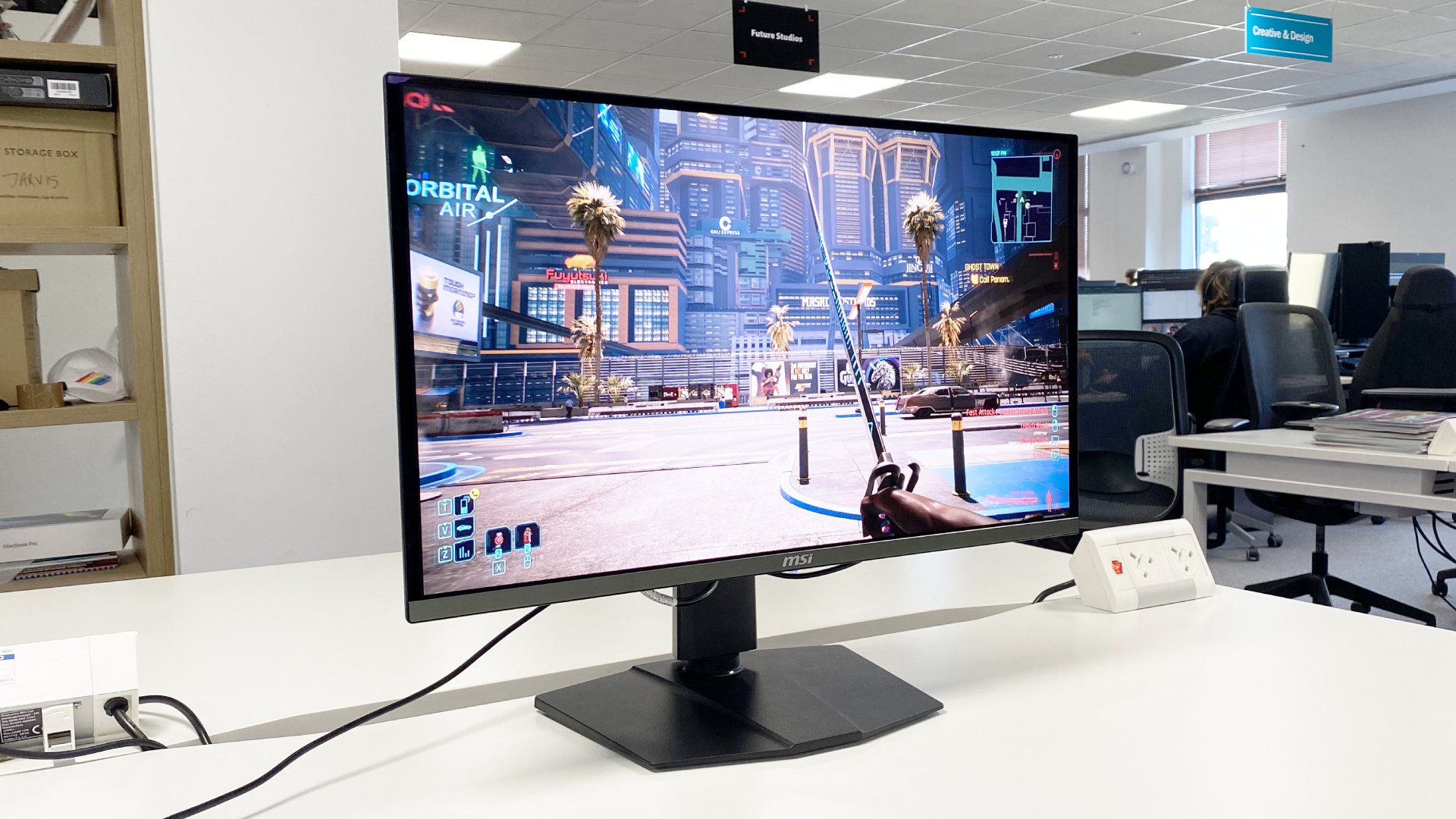Consideration all you avid gamers hell bent on the final word 27-inch 1440p expertise. The brand new MSI MPG 271QRX QD-OLED monitor is right here and it desires your cash. Numerous it, really, as this panel has an MSRP of $800 within the US and is listed for pre-orders within the UK for £1,000. Ouch.
After all, we have seen expensive 1440p OLED panels earlier than. However not one working at 360Hz courtesy of Samsung’s revised QD-OLED expertise. So, it isn’t solely sooner than the primary technology of 240Hz 1440p OLED gaming displays. It is also punchier because of that Samsung QD-OLED tech. Earlier 1440p gaming OLEDs have relied on LG’s earlier WOLED panel tech, which was actually fairly poor on the subject of full display screen brightness.
Like different current QD-OLED screens, response instances are foolish fast at 0.03ms and the color protection is superb at 99% of DCI-P3. As for the broader characteristic set, you get each a pair of HDMI ports, plus DisplayPort. All three interfaces can do the total 360Hz at 1440p. There’s additionally a USB-C port which provides a fairly helpful 90W of energy supply together with DisplayPort alt mode.
Rounding out the connections is a USB-A hub full with a KVM swap. The stand can also be totally adjustable, together with rotation into portrait mode if that is one thing you care about. All of it goes a minimum of some technique to justifying the painful pricing, albeit this monitor may be very a lot pitched in step with the OLED competitors. It is costly, to make certain, it is simply not notably costly in comparison with the direct OLED alternate options.
MSI MPG 271QRX
Display dimension: 27-inchResolution: 2,560 x 1,440Brightness: 1,000 nits HDRColor protection: 99% DCI-P3Response time: 0.03msRefresh price: 360HzHDR: DisplayHDR 400 Trueblack, Options: QD-OLED panel, adaptive sync, 1x DisplayPort 1.4, 2x HDMI 2.1, 1x USB-C with 90W PDWarranty: Three years (inc. panel burn in)Value: $799 / £999 (estimated)
Design-wise, MSI’s ordinary angular, barely dated early-2000s gamer aesthetic is inevitably in proof. The again cowl may be very skinny across the edges of the OLED panel, which is sweet and offers a contemporary really feel in comparison with thicker LCD panels. The rear is thicker within the centre, most likely to cater for the display screen’s customized heatsink.
In reality, nevertheless, the plastics and total vibe do not actually really feel worthy of the elevated $800 price ticket. This does not instantly appear like a premium product. At this worth level, a sleeker, extra mature look would most likely be preferable for many consumers.
One other purely aesthetic demerit entails the display screen bezels. Superficially, it is the same old slim-on-three-sides-plus-a-larger-chin setup seen on so many present displays. Nevertheless, this OLED panel has fairly a little bit of pixel overprovisioning.
That is factor for longevity. It provides plenty of scope for pixel shifting the picture to forestall the dreaded burn in. Nevertheless it additionally, in impact, provides to the obvious sizes of the display screen bezels, particularly the 2 aspect bezels. It isn’t an enormous deal, simply one thing to pay attention to.

You get three years of burn-in cowl from MSI with the 271QRX, in order that’s fairly reassuring.
Talking of burn in, this monitor has MSI’s OLED Care 2.0 suite of mitigation measures. Of the extra novel options are emblem and taskbar detection. The concept is to detect when vibrant static objects like logos and the Home windows taskbar are being displayed and decrease the brightness just for these parts to cut back the danger of burn-in.
It is laborious to really see that taking place with the MSI MPG 271QRX. Nevertheless, we had been working Home windows in Darkish mode with a black taskbar which most likely meant the taskbar detection algorithm wasn’t being triggered. No matter, you get three years of burn-in cowl from MSI with the 271QRX, in order that’s fairly reassuring.
If that is the options, design, and specs coated off, what in regards to the precise viewing expertise? It is instantly apparent that this display screen has extra visible pop than these early LG-based 1440p OLED displays, together with LG’s personal UltraGear 27GR95QE-B.

Full display screen brightness is round 250 nits and whereas that does not sound that spectacular, it is a tangible step up over the sub-200 nits of the primary technology of LG OLEDs and it is sufficient for all however the brightest ambient mild circumstances.
The one slight snag is that it’s good to run this monitor in HDR mode after which ramp the SDR brightness proper up within the Home windows show settings to get the most effective SDR full display screen brightness efficiency.
This factor is decently punchy and has fabulous colors and distinction.
That is most likely as a result of in SDR mode MSI is working some sort of automated brightness limiter (ABL). There is not any toggle for on within the OSD menu. However the brightness would not differ in SDR if you resize all-white software home windows, which is typical when an ABL is working.
There’s a little brightness variability in HDR mode, then again, nevertheless it’s fairly refined and nowhere close to as dangerous, once more, as these disappointing early LG-based fashions which dimmed dramatically if, as an illustration, you dared to open a big, principally white browser window.
Anyway, this factor is decently punchy and has fabulous colors. It additionally, clearly, has that good per-pixel OLED lighting factor happening and due to this fact incredible distinction. On that notice, the panel coating is shiny somewhat than matte, which provides to the sense of deep and inky black ranges. Good.
In case you’re questioning, sure, this QD-OLED panel does have a slight concern with obvious “greyness” in actually vibrant lighting circumstances. It occurs as a result of QD-OLED panels haven’t got a polarising filter and so mild placing the show very barely prompts the quantum dot particles which in flip kick a tiny bit of sunshine again. At evening it is a complete non concern and we would argue within the day it is solely one thing to fret about, and even then simply barely, in actually vibrant ambient lighting circumstances.
What’s extra of an issue is textual content high quality. Samsung’s revised QD-OLED tech has a modified subpixel construction which supposedly helps with font rendering. Nevertheless it nonetheless seems fairly gentle right here and that attribute pink fringing stays seen. It isn’t horrible, however in case you are very delicate to barely fuzzy fonts, you continue to will not be pleased with this improved QD-OLED tech.

After all, gaming is the principle remit and there the MSI MPG 271QRX completely delivers. The mixture of OLED-powered 0.03ms response instances with 360Hz is fairly particular. That is about as speedy as desktop show tech at the moment will get.
Is it well worth the huge $500 worth premium in that regard over, say, the $300 Asus ROG Strix XG27ACS and its 1ms, 180Hz IPS panel? In all probability not.
Taking part in, say, CS: GO on each panels this MSI is unquestionably superior by way of latency and readability.Nevertheless, it would not really feel a number of instances higher. Just a bit bit higher. However then insisting on the easiest efficiency normally means paying by way of the nostril for it. The identical applies to the HDR efficiency. It is actually, actually (actually) good. Darkish scenes punctuated by neon lighting in Cyberpunk, as an illustration, look out of this world.
So, it is a spectacularly good gaming panel. The issue, as ever with OLED, is worth. At $800 for a mere 27-inch 1440p monitor it looks like megabucks when you could have screens just like the aforementioned Asus that are awfully good for simply $300.

On the identical time, the Alienware 34 AW3423DWF stays out there for a similar $800 worth level. That is a 34-inch ultrawide mannequin with QD-OLED tech, albeit first-gen and working at 165Hz. Nevertheless it nonetheless looks like the higher deal because of that rather more immersive 34-inch ultrawide kind issue.
Purchase if…
✅ You need the final word 1440p panel: That is the quickest, most responsive 1440p monitor we have seen.
Do not buy if…
❌ You desire a large, immersive expertise: The 16:9 a-aspect 27-inch feels a bit puny at this worth level.
So this MSI does little improper and a complete lot proper. The picture high quality is generally fabulous. It is simply this phase of the market, the 27-inch 1440p OLED gaming monitor, looks like poor worth subsequent to the alternate options. A kind of alternate options is MSI’s personal 32-inch 4K OLED, the MPG 321URX, which at its $999 launch costs feels prefer it provides far more display screen and a tonne extra pixels for an inexpensive premium.
If for no matter purpose you need 27-inch 1440p above all else, that is the most effective but instance of the breed we have seen. It is really wonderful. However that apart and most significantly for the cash, it would not make a lot sense for many avid gamers.













![[DEV] Doodle Defender – Coloration Matching Wave Protection Recreation – Out there now!](https://i1.wp.com/external-preview.redd.it/LGwgeeuMo2icaNCCQucRSIfuboEIM52dJuKzflzWmNI.jpg?width=320&crop=smart&auto=webp&s=d4751ef2fd787eb4e29c1452f3f386d7e586d1a2&w=120&resize=120,86)



